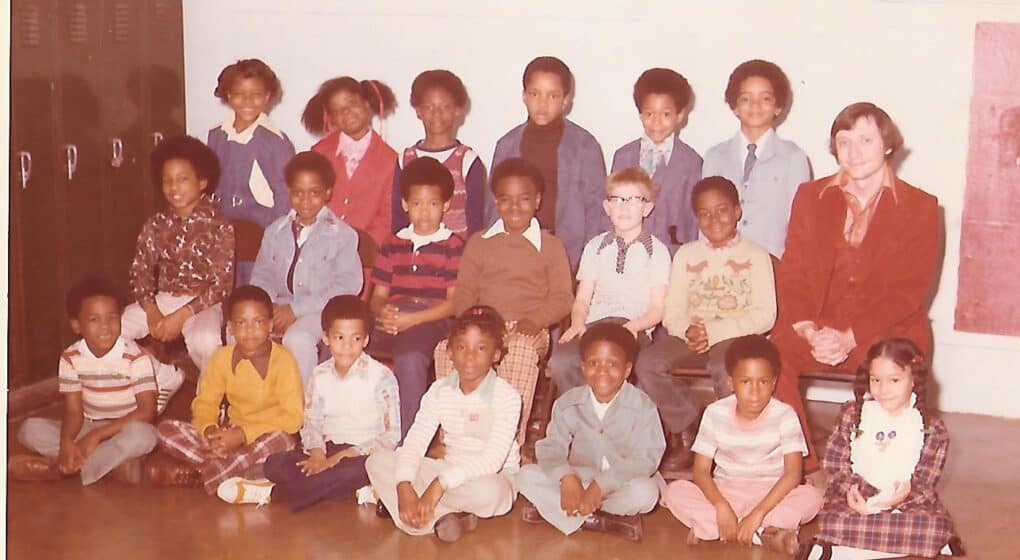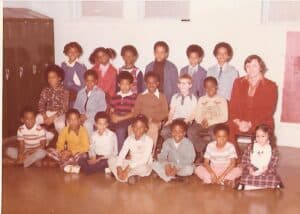

Second grade class (15 boys, 4 girls) at Resurrection Lutheran School, Chicago – 1978. Note the fashionable long-term sub in the rust-colored leisure suit!
“Jesus’s life makes it clear that compassion isn’t just an emotion. It’s more than just feeling sorry for someone. Jesus shows us that compassion is a strong emotion that elicits a physical response. The test of compassion is in the and.”- Kyle Idleman, One At a Time
“When [Jesus] saw the crowds, he had compassion on them, because they were . . . like sheep without a shepherd. Then he said to his disciples, ‘The harvest is plentiful, but the workers are few. Ask the Lord of the harvest, therefore, to send out workers into his harvest field.”- Matthew 9:36-38 (NIV)
In January 1978, I began work on a master’s degree in learning disabilities. Back in the day, graduate schools offered programs in specific areas of special education. Rather than today’s cross-categorical approach. At that time I attended classes at night, so I was available to substitute teach during the day.
Sometime in late winter or early spring, Resurrection Lutheran School asked me to consider completing the school year for a teacher taking medical leave. I eagerly accepted this calling. For, as Kyle Idleman exhorts, “the test of compassion is in the and.”
First, to ensure a smooth transition for her second graders, the classroom teacher and I worked as a team for a few days. Then, as I assumed my shepherd role, I crystallized my calling. I pledged to maintain the teacher’s classroom structure and curriculum while introducing my personality. Above all, sensitive to the children’s sense of loss, I modeled the and test of compassion. One day, one student at a time.
Writing in One At a Time: The Unexpected Way God Wants to Use You to Change the World (2022), Kyle Idleman observes that the word self-centered describes most of our emotions. Thus, what we experience at any given moment sets our feelings. However, what others were going through determined Jesus’s primary emotion. Therefore, as Kyle traced the times Jesus showed compassion in the Gospels, he noticed that a conjunction usually followed that feeling. For example, in Matthew 20:34 (NIV) we read this about two blind men: “Jesus had compassion on them and touched their eyes.”
Most significantly, the author underscores, growth in compassion starts with eyes-open prayer. Perhaps you grew up with the belief that prayer occurred at certain ‘right’ times. Before meals, at bedtime. And, of course, during church. Or, Kyle quips, heaving up that desperate Hail Mary prayer before a test you failed to study for. With head bowed and eyes closed.
Yet, Kyle asserts, there is a right time to pray. And that time = now! Since through prayer we express our dependence on Jesus, we must always pray to keep that constant connection with Jesus. Hence, Pastor Idleman explains:
“If we’re supposed to pray at all times, then we’re going to have to pray with our eyes open. Learning to pray with my eyes open changed my relationship with God, but it also changed the way I see people. . . . Praying with my eyes open hleps me see what Jesus saw, feel what Jesus felt, and do what Jesus did. . . .
Eyes-open prayer changes the way you see people in the commonplace moments of life. When you look at your ordinary days through the lens of compassion, you start to see opportunities for God to do something extraordinary with you.”
In conclusion, Pastor Idleman encourages , pay attention to the ripple effect of compassion. Even though we love people one at a time, that love overflows to others. So, see yourself, not as a concerned bystander, but as a first responder. One who exemplifies the and test of compassion!

